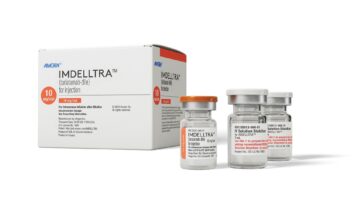In his annual “State of the Clinic” address, Cleveland Clinic CEO Dr. Delos “Toby” Cosgrove said the federal health reform law would cost the health system $174 million in revenue in 2015.
The primary reason for the hit to the Clinic’s revenue is that reimbursement rates from both government and private payers aren’t keeping pace with inflation. At the same time, hospitals must report a growing number of quality metrics related to their care, Cosgrove said.
“The new healthcare reform bill means we’re going to have to do better with less,” Cosgrove said, according to Crain’s Cleveland Business.

Using Informed Awareness to Transform Care Coordination and Improve the Clinical and Patient Experience
This eBook, in collaboration with Care Logistics, details how hospitals and health systems can facilitate more effective decision-making by operationalizing elevated awareness.
Cosgrove has previously said the controversial health reform package, which passed last year, would increase the Clinic’s costs. But Wednesday’s address may be the first time Cosgrove has quantified the financial hit the hospital would take as a result of the law.
Of course, health reform advocates would likely say that cutting hospitals’ revenues — which are generally costs coming out of Americans’ pockets — is exactly what health reform was designed to do. That is to say, one of the law’s key goals is to slow the rapidly rising costs of healthcare in the U.S., which spends more of its gross domestic product on healthcare than any other nation and doesn’t get an acceptable return on that investment in terms of the quality of care delivered in the country.
And hospital consolidation, which has happened across the nation in recent decades, as well as at the Clinic, is often blamed as one of the primary reasons of escalating health costs in the U.S. A report last year by the Massachusetts Attorney General’s office found that insurance companies pay some hospitals and doctors twice as much as others for essentially the same patient care. The report suggested the state’s best-paid providers (in other words, its top hospitals) were the main driver of the state’s soaring healthcare costs, HealthLeaders Media reported.
Other highlights of Cosgrove’s address:

A Deep-dive Into Specialty Pharma
A specialty drug is a class of prescription medications used to treat complex, chronic or rare medical conditions. Although this classification was originally intended to define the treatment of rare, also termed “orphan” diseases, affecting fewer than 200,000 people in the US, more recently, specialty drugs have emerged as the cornerstone of treatment for chronic and complex diseases such as cancer, autoimmune conditions, diabetes, hepatitis C, and HIV/AIDS.
- One way the Clinic is looking to cut costs is to drive down readmission rates. The health system’s number of monthly readmissions is about 1,700, but Cosgrove would like to see that fall to around 1,500.
- The Clinic will step up its investment in genomics research. “We cannot afford to ignore this trend in healthcare,” Cosgrove said.
- Increasing the Clinic’s brand recognition is a top priority. Cosgrove said the Clinic’s national brand recognition significantly lags other top hospital systems like Johns Hopkins, Mayo Clinic and UCLA Health System, The Plain Dealer reported.
- Nearly 240 organizations, more than half of them international, requested partnerships with the Clinic last year.
- In other cost-cutting measures, Cosgrove predicts the Clinic will see an increase in shared appointments for patients suffering from chronic disease and a greater emphasis on care from “physician and nurse extenders” — technicians, nurse practitioners and physician assistants — which will allow doctors to see more patients more efficiently.
- 2010 operating revenue increased 5 percent to $5.88 billion.












